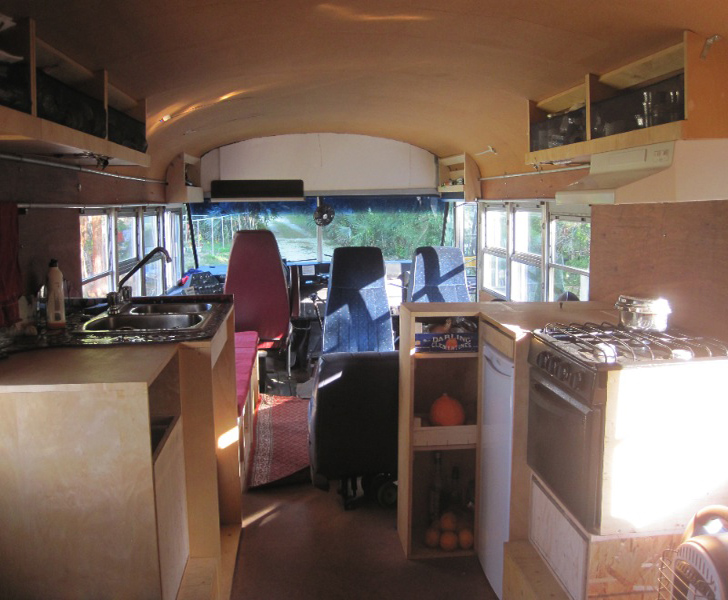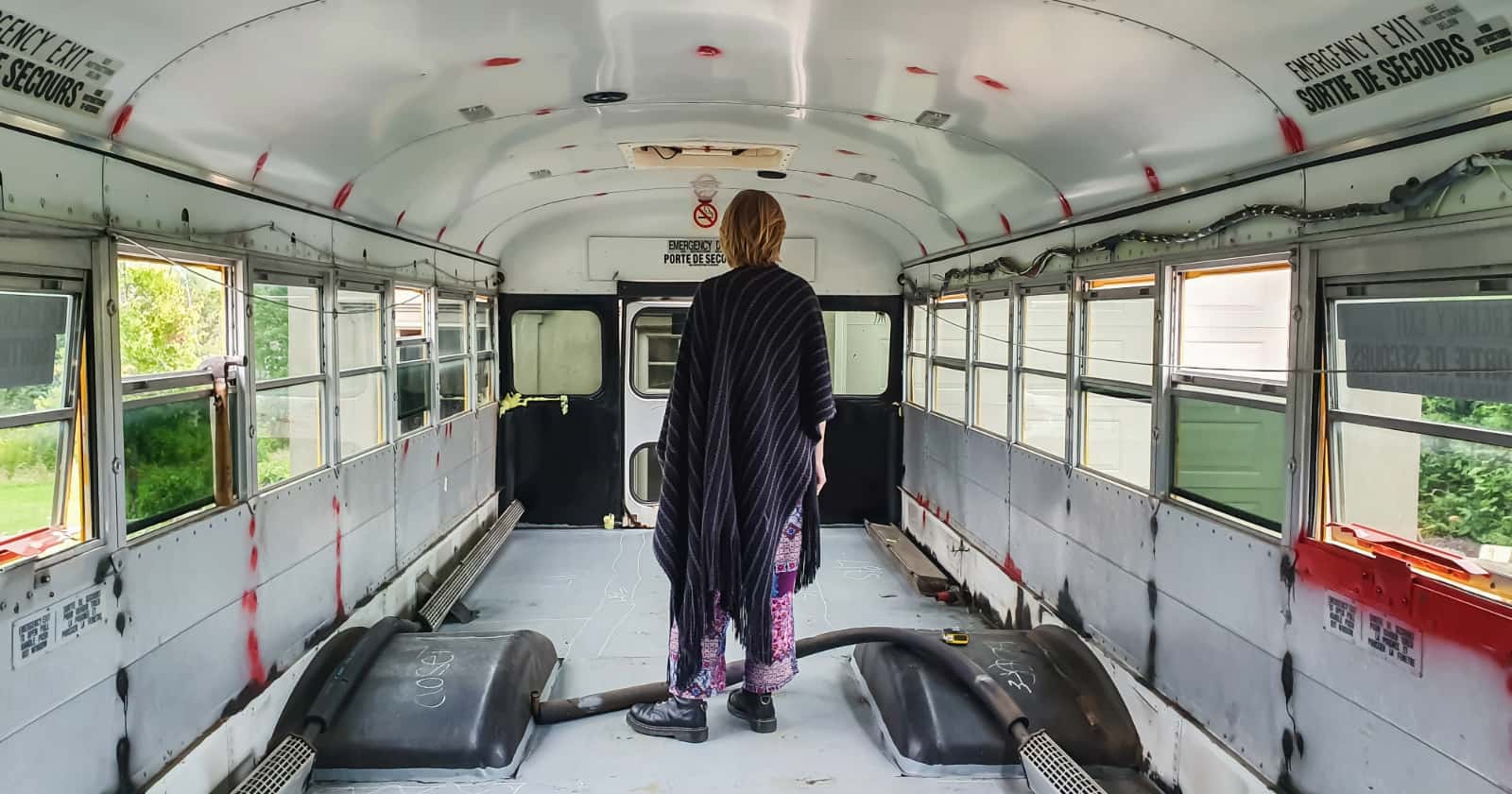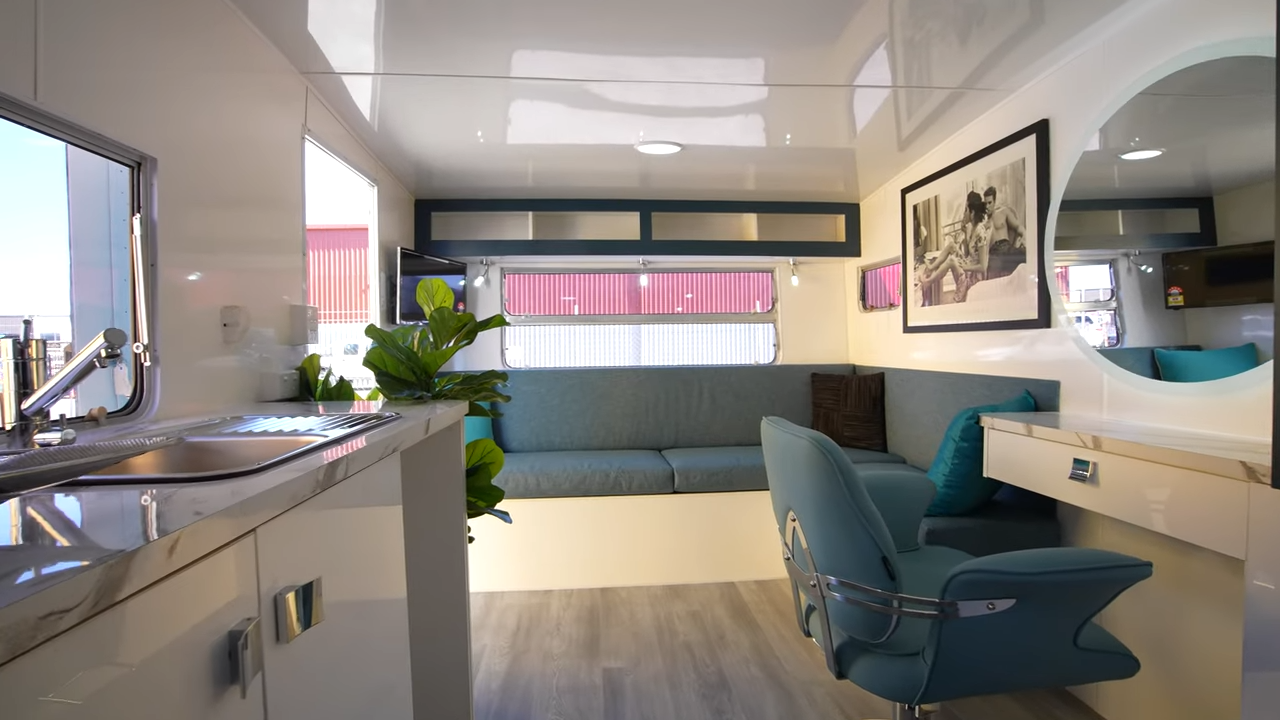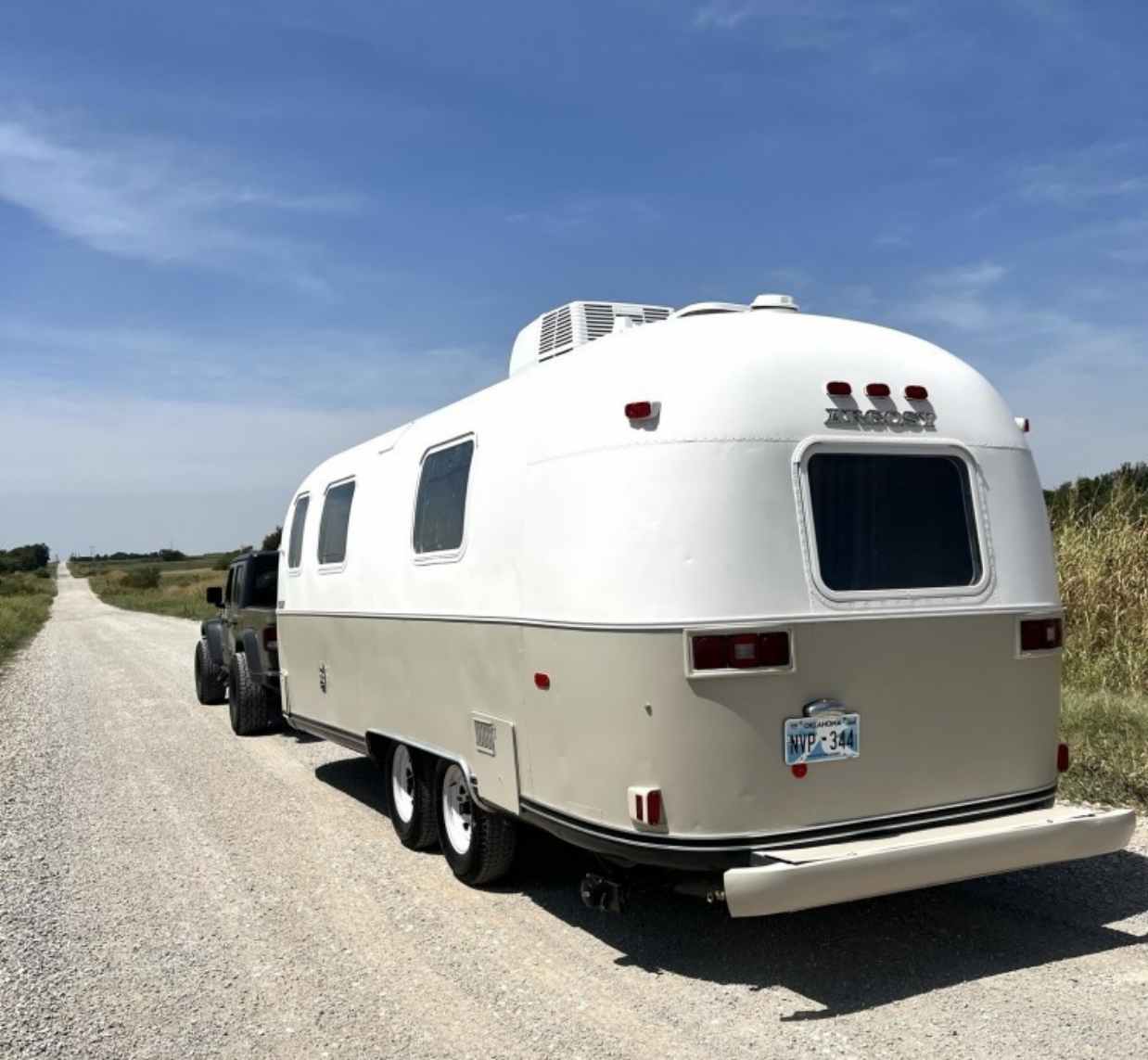While travel and enjoyment are definitely the primary factor behind the RV’s popularity in North America, there is a growing trend toward leaving a smaller footprint that makes RV options, such as converted school buses, attractive as alternative living spaces.
One of the biggest challenges to overcome is how to make a school bus, something that traditionally consumes a lot of resources, into a planet-friendly dwelling. We found an organization that seems to have done a pretty good job.
The Transition Bus, where they found it in an auction lot.

Meet the Transition Bus team. This old yellow school bus got a makeover as part of a larger project geared towards educating entire communities to the possibilities of a simple life, making use of modern technology to get back to a more community-based model of living—and it’s pretty cool! The team said,
Our school bus, converted to a mobile home, allows us to travel across the United States and Canada. We want to meet those who are involved in their community. Those who are audacious and courageous, striving for a just, fair and green social reorganization.
They use the bus as a traveling workshop of sorts to educate the public on how to integrate low-energy ideas into a usable dwelling.
Interior stripped down to the aluminum frame and ready for foam.
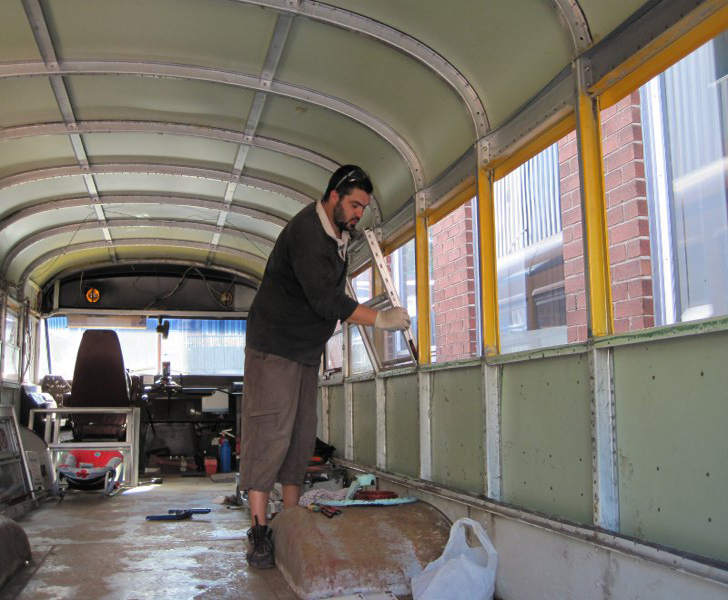
Interior panels marked out and ready to cut with a grinder.
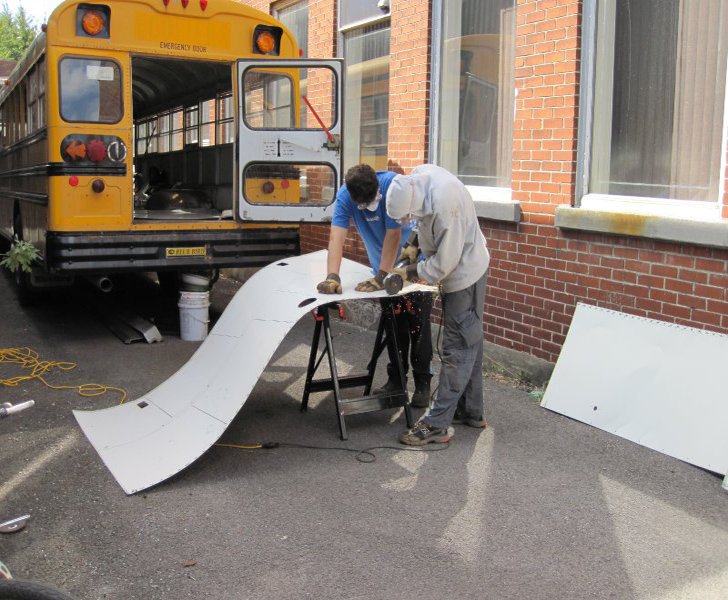
The bus itself was first gutted, then fitted from floor to ceiling with energy-efficient foam panels. This was phase one of reducing energy usage, making the RV itself hold a temperature better so that less energy is required to heat and cool it. It also saves wear and tear on mechanical systems that don’t have to run as much.
Foam panels installed throughout the bus.
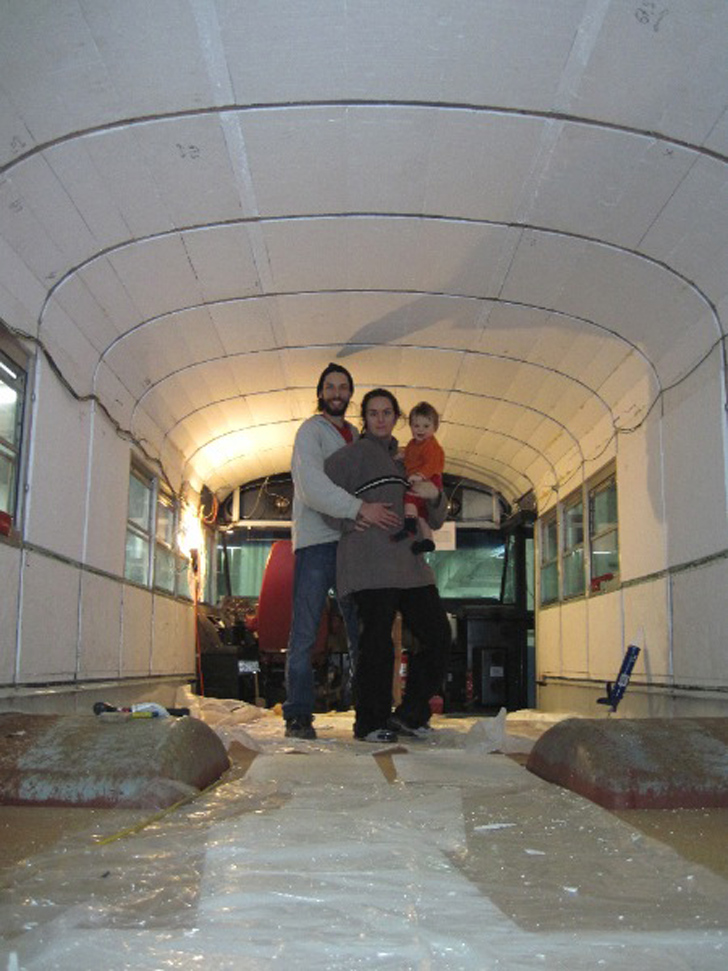
They worked hard to use recycled materials as much as possible, although they don’t give a lot of detail about their sources.
Most of the interior is made from plywood, a very resource-friendly building material. One really cool product they used was the cork for the ceiling. It’s glued directly over the foam, further insulating the bus and deadening noise, not to mention creating a great look!
Here is the cork ceiling being glued into place.
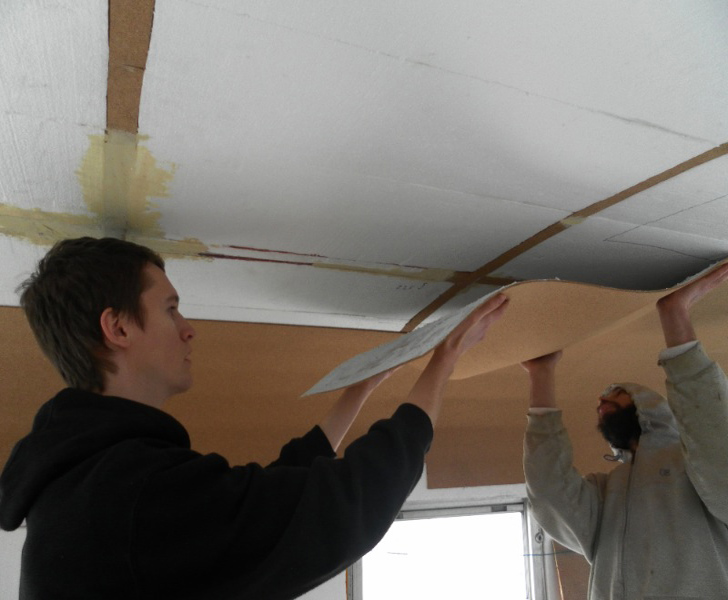
The bus is run off of bio-diesel, which in its simplest form can be made from recycled cooking oil. Restaurants and grocery store delis discard tons of the stuff each year.
For electricity, the large roof space is home to solar panels that charge a bank of four batteries. The solar power system produces enough electric power to run lights, fans and small devices.
Bathtub and bench seat in position to check spacing.
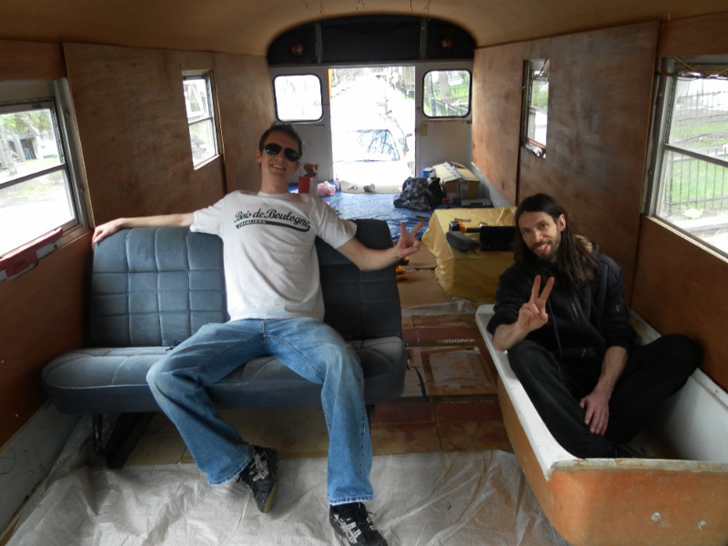
Propane is one of the most efficient fuels for heating or cooking, and the bus was outfitted with an integrated propane tank, inside a cubby fitted underneath the bus.
Cooking is done on a propane stove in the bus’s kitchen. To minimize the need for AC, the bus is outfitted with forced air vents at the roof line that help to keep the air fresh and cool.
Solar on the roof, note the white paint to reflect heat.
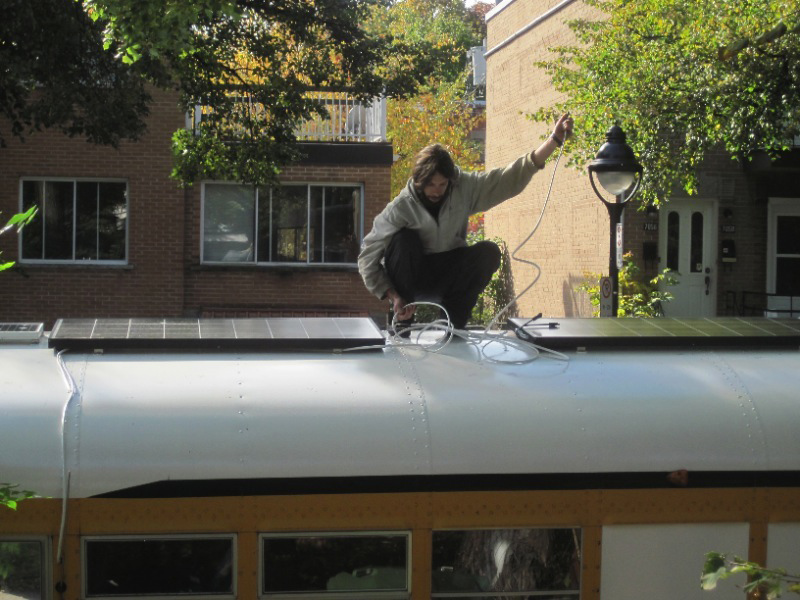
The interior of the bus is ergonomically designed to use as little material as necessary. The sleeping arrangements in the back are a prime example. The bottom bunks serve as framework for the upper, double loft.
To conserve space and water, a bathtub was installed in place of a shower. The grey water from the tub can be used to flush toilets and when not in use, the bathtub has a cover that transforms it into more seating.
Forced air vents at the front of the bus.
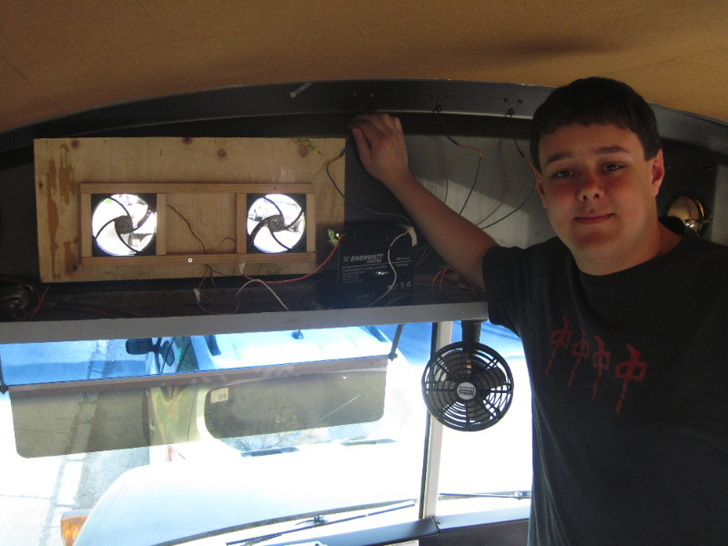
And the propane tank underneath.

All in all, the Transition Bus provides a lot of inspiring design ideas. Costs are kept to a minimum while not skimping on material.
The finished interior from front-to-back and from the rear facing forward.
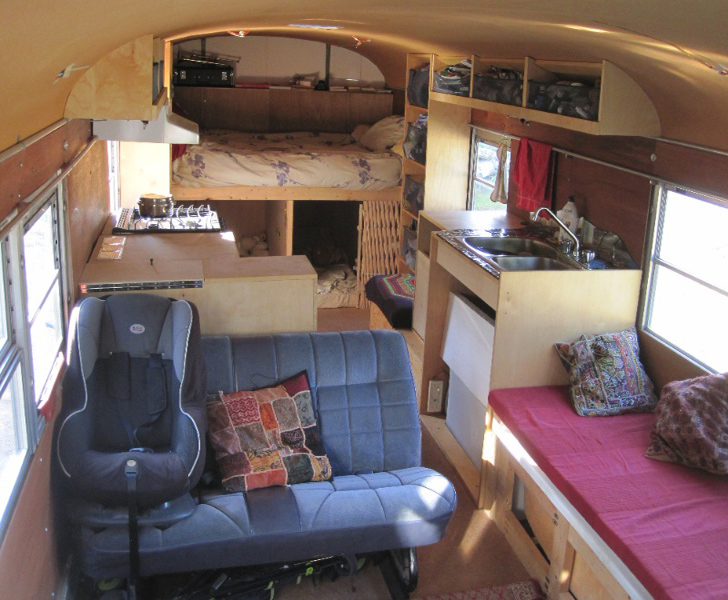
To learn more about Transition Bus and how they’ve set out to broaden their message of green living, visit their website.

